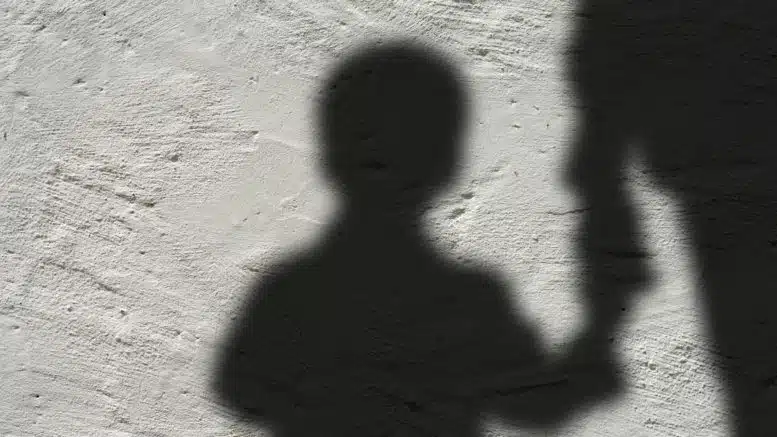By Jennifer Fernandez
Kara Kai Sanders knows all about how children face trauma, even when a parent is doing the best they can.
In 2019, she struggled to find stable housing, living with her son in temporary shelters, hotels and even their car because living with her son’s father “was not healthy.” They later got kicked out of a hotel because she couldn’t pay on time and lived in their car while waiting for a shelter space to open up.
Now she’s on a mission to turn her experiences with housing struggles into advocacy for other parents and children seeking stability.
Sanders shared her experiences, and her plans to help others, at a two-day summit last month called “Leveraging North Carolina’s Assets to Prevent Child Trauma.”
“If we’re going to help children, gotta start by helping their parents,” she said during a panel discussion ahead of the summit. “Moving from surviving to thriving is so important, and that looks different for everyone.”
The inaugural child trauma summit at N.C. State University on April 27-28 drew hundreds of people in person and virtually. They came from across the state and various disciplines — health care, education, nonprofit groups, state agencies, community leaders, legislative members and people with lived experience such as Sanders.
Presenters covered a range of issues within the context of child trauma, such as trauma’s effect on brain development and mental health, the role of inequities and racism in trauma and how agency and public policy can be shaped to react to or prevent trauma.
Focus on trauma
Adverse childhood experiences, also called ACEs, can have a big impact on health, opportunity and the chance of being a victim of or perpetrator of violence, according to research from the Centers for Disease Control and Prevention. ACEs are potentially traumatic instances experienced by children — such as witnessing violence or having a parent or close family member die by suicide or homicide — that leave a lasting mark.
One in six adults has experienced four or more types of adverse childhood experiences, according to the CDC. And the research shows that the more traumas a child experiences, the greater the risk for adult disease.
These experiences are linked to chronic health problems, mental illness and substance misuse in adulthood, the CDC said. At least five of the 10 leading causes of death are associated with adverse childhood experiences, the CDC said, including heart disease and diabetes.
Embedded trauma
Several presenters spoke about how the various types of trauma, such as poverty, racism, food insecurity, drug use, neglect, abuse and unstable housing, can leave physical markers in children that linger into adulthood and can even become generational.
“What happens to people affects their genes,” said Lisa Amaya-Jackson, a psychiatrist who is an instructor in psychiatry and behavioral sciences at Duke University Medical Center. She’s also the co-founder of the Durham-based nonprofit Center for Child and Family Health.
“Trauma can actually alter our DNA,” she said, noting that physical response to trauma can be passed on to the next generation.
“Child adversities cast a very long shadow,” she said.
Presenters pointed to research such as the Great Smoky Mountains Study and the Bucharest Early Intervention Project, which both showed the physical effects that trauma leaves on children long after the trauma takes place.
The Great Smoky Mountains Study started in 1992 and tracked 1,420 children to assess the effects of child trauma. When researchers followed up with those same children — now adults — to see how they were doing, they found that the trauma that occurred in childhood was continuing to affect functioning and mental health decades later, said Bill Copeland, a child psychologist in the Department of Psychiatry at University of Vermont who formerly worked at Duke University Medical Center.
Blood taken over time shows that those with more childhood trauma are aging faster, biologically, than their peers, Copeland said.
Similarly, the Bucharest project showed that children who received research-supported foster care had better-developed brains than children who received institutional care.
“The effects of trauma are long-term,” Copeland said. “Trauma leaves a scar that lasts across the lifespan.”
While intervention can be beneficial at any point, speakers said, many urged a focus on making it happen as early as possible. Research shows that supportive factors, such as high-quality early childhood education and the fostering of strong connections with supportive adults throughout the lifespan, can reduce the effects of trauma at home.
Interventions can also include helping parents who may be dealing with the effects of their own childhood traumas.
Diana Fishbein, a leading force behind the summit’s creation, said in an interview the United States is one of the only developed countries that lacks strong support for parents. Other countries offer expansive supports for child care, parental leave and in some cases, financial assistance.
“If parents feel supported, they’re much less likely to maltreat their children,” she said.
The research is very clear, Fishbein said.
“What we’re underinvesting in, underfunding … is the factors that lead to child trauma in the first place and how we can intervene,” she said.
What’s next?
Fishbein, senior research scientist with the Frank Porter Graham Child Development Institute at UNC Chapel Hill, would like to see the discussions and collaborations continue.
She thinks there should be a task force focused on child trauma that brings together representatives from the groups that attended and presented at the summit.
Other goals:
- Issue a series of briefs on key topics from the summit.
- Issue an executive summary on the summit.
- Create a series of policy recommendations based on discussions from the summit.
When she moved to the state three years ago, Fishbein saw there were dozens of groups working on these issues. She wanted to bring them all together.
She pushed for the summit to “see what we could get going as far as a movement” on tackling child trauma in the state.
She hopes North Carolina can create policies focused on prevention rather than reaction.
Sign up for our Newsletter
In an interview after the summit, Fishbein said participants were “activated” and motivated by the discussions.
“It all just came together,” she said.
Kelly Graves is the executive director and co-founder of the Greensboro-based nonprofit Kellin Foundation, which focuses on building resilience for children and their families. She said grassroots local coalitions are essential and must be funded as part of the process.
Like Fishbein, Graves said she hoped the summit provided the push needed to move forward.
“It is my belief that all of the spokes are in place in North Carolina, and now it’s time to connect the dots, align those steps and support a resilient N.C. together from a combined top-down and ground-up approach,” Graves said. “I believe we can make this happen.”











